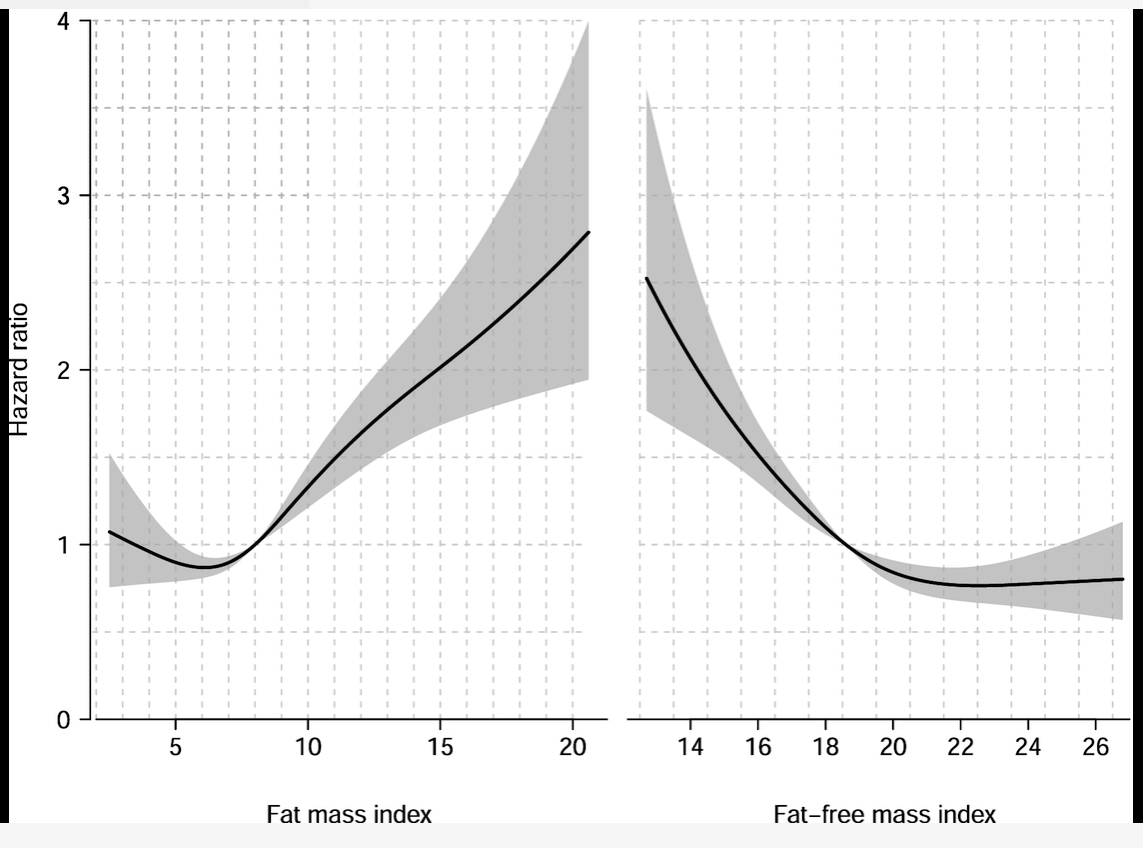Relation of body fat mass and fat-free mass to total mortality: results from 7 prospective cohort studies
Anja M Sedlmeier, The American Journal of Clinical Nutrition, Volume 113, Issue 3, March 2021, Pages 639–646,
Background
Fat mass and fat-free mass may play independent roles in mortality risk but available studies on body composition have yielded inconsistent results.
Objective
The aim was to determine the relations of body fat mass and fat-free mass to risk of mortality.
Methods
In pooled data from 7 prospective cohorts encompassing 16,155 individuals aged 20 to 93 y (median, 44 y), we used Cox regression and restricted cubic splines to estimate HRs and 95% CIs for the relation of body composition, measured by bioelectrical impedance analysis, to total mortality. We adjusted for age, study, sex, ethnicity, history of diabetes mellitus, education, smoking, physical activity, and alcohol consumption.
Results
During a median follow-up period of 14 y (range, 3–21 y), 1347 deaths were identified. After mutual adjustment for fat mass and fat-free mass, fat mass showed a J-shaped association with mortality (overall P value < 0.001; P for nonlinearity = 0.003). Using a fat mass index of 7.3 kg/m2 as the reference, a high fat mass index of 13.0 kg/m2 was associated with an HR of 1.56 (95% CI: 1.30, 1.87). In contrast, fat-free mass showed an inverse association with mortality (overall P value < 0.001; P for nonlinearity = 0.001). Compared with a low fat-free mass index of 16.1 kg/m2, a high fat-free mass of 21.9 kg/m2 was associated with an HR of 0.70 (95% CI: 0.56, 0.87).
Conclusions
Fat mass and fat-free mass show opposing associations with mortality. Excess fat mass is related to increased mortality risk, whereas fat-free mass protects against risk of mortality. These findings suggest that body composition provides important prognostic information on an individual's mortality risk not provided by traditional proxies of adiposity such as BMI.














